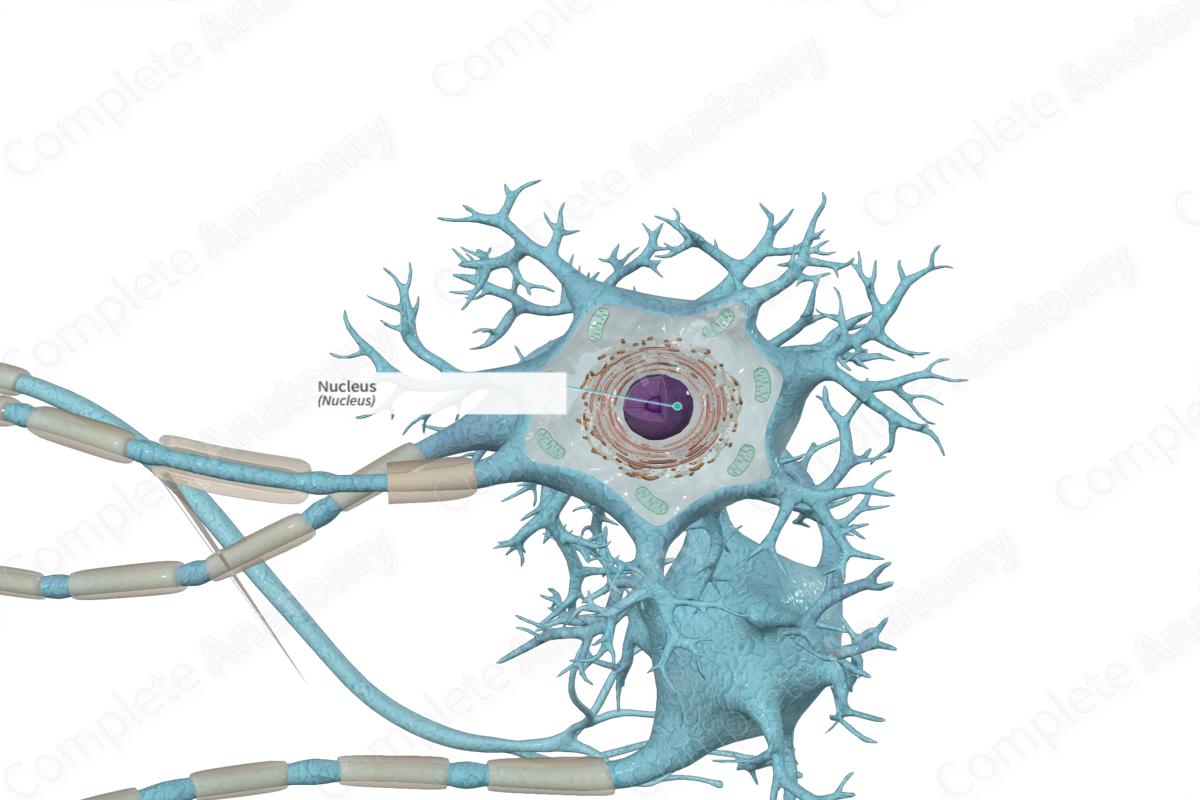
Quick Facts
The nucleus is a spheroid body within a eukaryotic cell, separated from the cytoplasm by the nuclear envelope, and containing chromatin, a nucleolus, and nucleoplasm. In the nucleus, the cell's genetic information is stored on the chromosomes and RNA transcription and processing occur (Dorland, 2011).
Structure and/or Key Features
The nerve cell body contains a large, spherical, euchromatic nucleus with at least one prominent nucleolus. The nuclear membrane is a double membranous envelope that surrounds the nucleus. However, the nuclear membrane is not continuous as it fuses at locations all around the nucleus to form nuclear pores. Between the two nuclear membranes is a perinuclear cisternal space.
Anatomical Relations
The nucleus is located centrally within the cell body. In cases of cell injury, the nucleus becomes displaced to the periphery (Splittgerber, 2018).
Function
The nucleus is the control center of the cell and houses the genome (genetic information) in eukaryotic cells. It enables DNA replication and synthesizes ribosomal (rRNA), messenger (mRNA), and transfer (tRNA) ribonucleic acid.
References
Dorland, W. (2011) Dorland's Illustrated Medical Dictionary. 32nd edn. Philadelphia, USA: Elsevier Saunders.
Splittgerber, R. (2018) Snell's Clinical Neuroanatomy. Wolters Kluwer Health.

